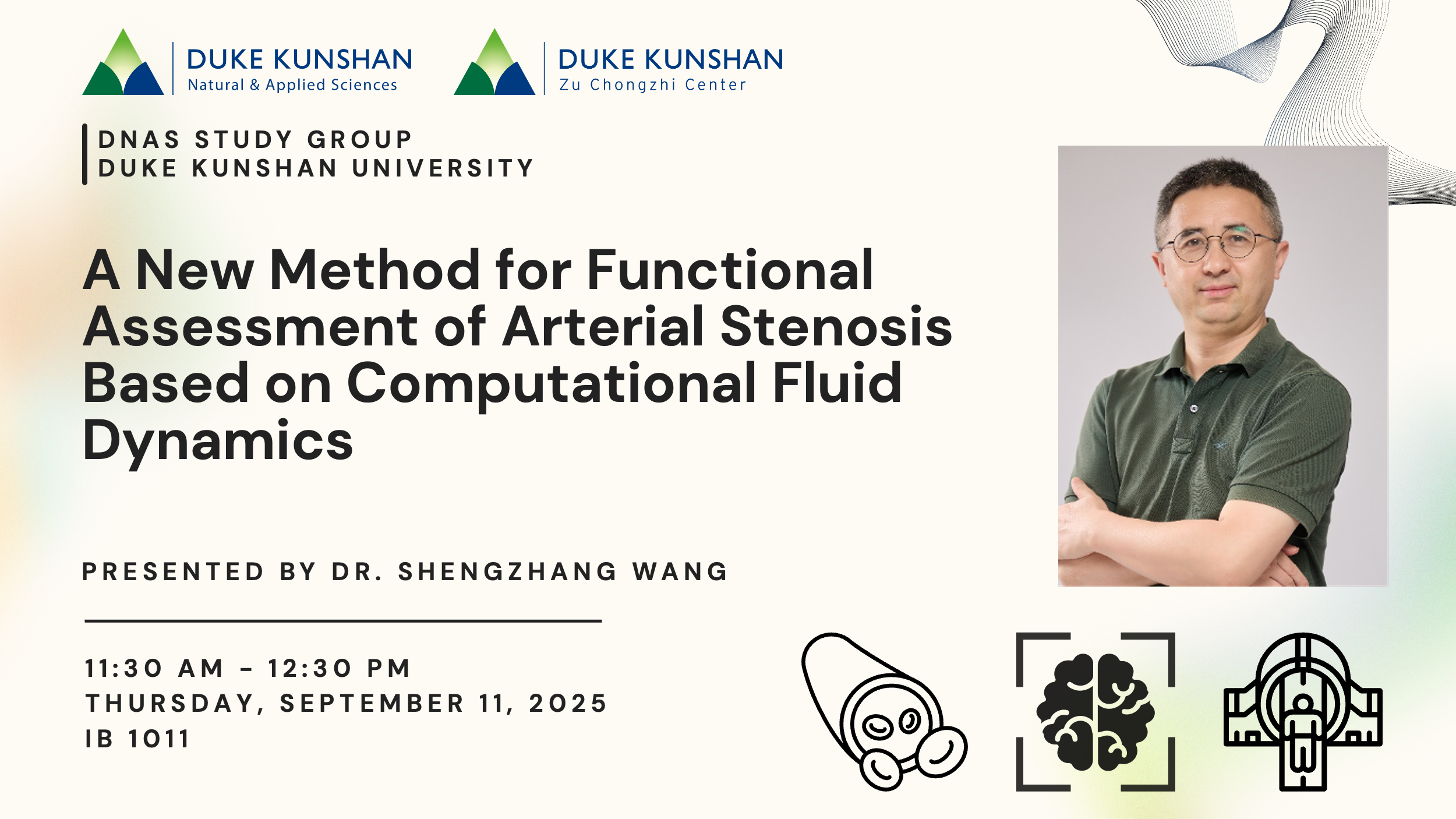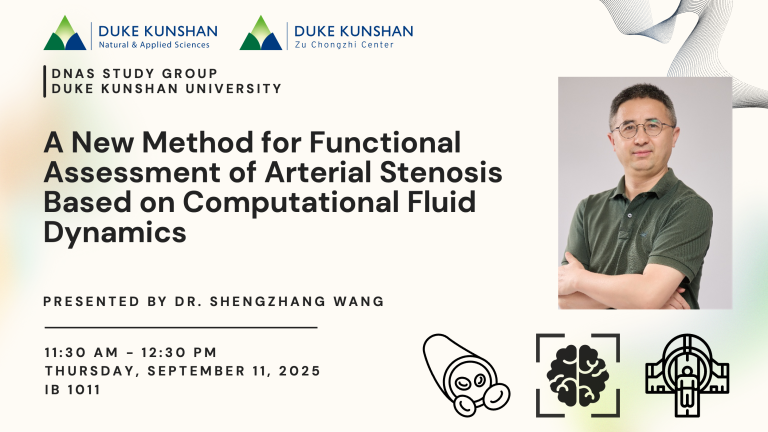Start
End
Location
Type
Organizer
Share
Event details
DNAS Study Group Seminar Series
Title: A New Method for Functional Assessment of Arterial Stenosis Based on Computational Fluid Dynamics
Date and Time (China standard time): Thursday, Sept 11th, 11:30am – 12:30pm
Location: IB 1011
Speaker: Dr. Shengzhang Wang
Abstract:
Atherosclerotic stenosis often leads to myocardial infarction, cerebral infarction, and lower limb arterial occlusion, posing a serious threat to human health. Accurate assessment of the degree of arterial stenosis is of great clinical value for optimizing surgical decision-making and improving treatment outcomes. Traditional imaging methods can only reflect the anatomical degree of stenosis and fail to reveal the functional impairment of blood supply.
In recent years, CT-FFR (fractional flow reserve derived from computed tomography angiography combined with computational fluid dynamics) has been used for noninvasive assessment of arterial stenosis. However, current CT-FFR methods still have two major issues:
- Inaccurate specification of outlet boundary conditions.
- High dependence of results on measurement position.
Our research group has proposed a novel method and parameter, CT-QFFR (flow-ratio-based FFR calculation method), based on hemodynamic principles and computational fluid dynamics. The approach reconstructs a stenotic artery model and a corresponding restored (non-stenotic) model, assuming identical microvascular resistance, and defines CT-QFFR as the ratio of blood flow between the two models.
When applied to coronary stenosis, CT-QFFR avoids the dependence on measurement location and thus exhibits higher computational stability compared to traditional CT-FFR. Applied to the evaluation of anterior circulation cerebral artery stenosis, this method accurately distinguished the relative blood flow between left and right cerebral arteries, offering higher clinical value than conventional diameter stenosis rates. Applied further to functional assessment of lower limb arterial stenosis, we introduced a new hemodynamic index: Blood Flow Recovery Fraction, which was validated against DSA (digital subtraction angiography) data and showed high accuracy.
Bio:
Prof. Shengzhang Wang is a Professor and Ph.D. Supervisor at the School of Biomedical Engineering and Technology, Fudan University. He earned his Bachelor’s and Master’s degrees from the Department of Mechanics and Engineering Science at Fudan University, and later obtained his Ph.D. in Mathematics from Hokkaido University, Japan. Currently, he serves as the Director of the Institute of Biomechanics at Fudan University. In addition, he holds several important academic positions, including Chair of the Biomechanics Committee of the Shanghai Biomedical Engineering Society, member of the Biomechanics Division of the Chinese Society for Biomaterials, member of the Biomechanics Committee of the Chinese Society of Theoretical and Applied Mechanics, and member of the Cardiovascular Implant Subcommittee under the National Technical Committee on Standardization of Surgical Implants and Orthopedic Devices.
Prof. Wang’s research focuses on the biomechanics of cardiovascular and cerebrovascular diseases, as well as studies on implantable interventional devices. Over the course of his career, he has published more than 100 academic papers and served as chief editor of three textbooks and monographs. He has led numerous major projects, including grants from the National Natural Science Foundation of China, national key R&D programs supported by the Ministry of Science and Technology, challenge projects from the Ministry of Industry and Information Technology, and collaborations with medical device enterprises. His contributions to the field have been widely recognized, earning him the Second Prize of the Ministry of Education Science and Technology Progress Award.



